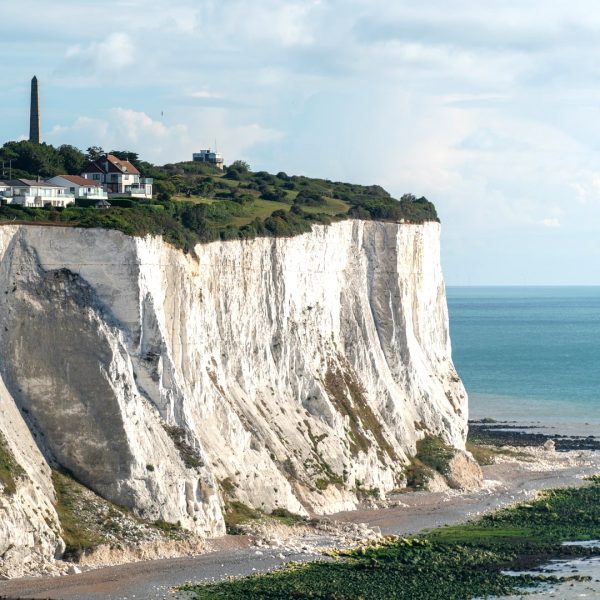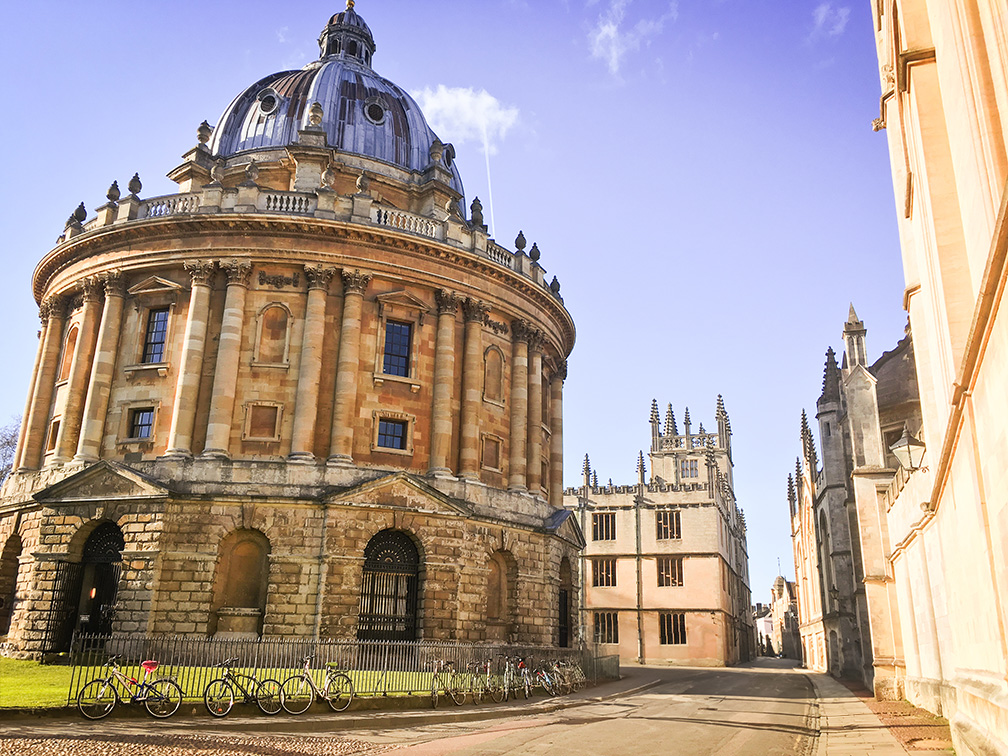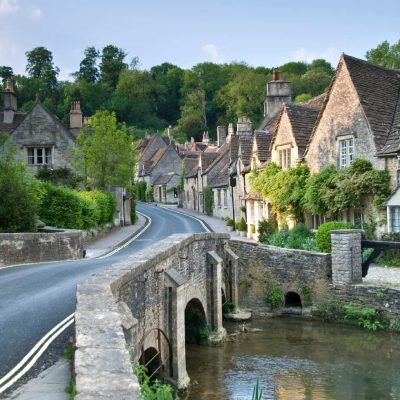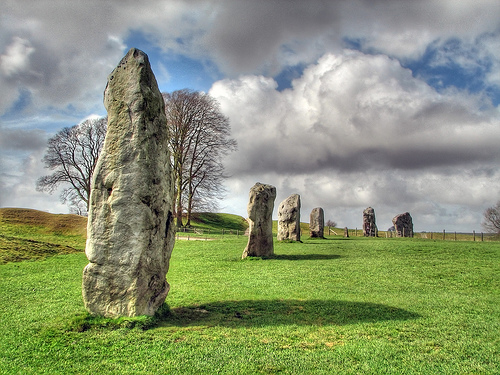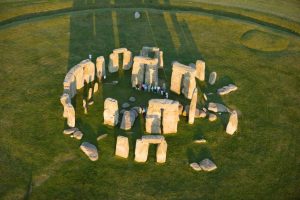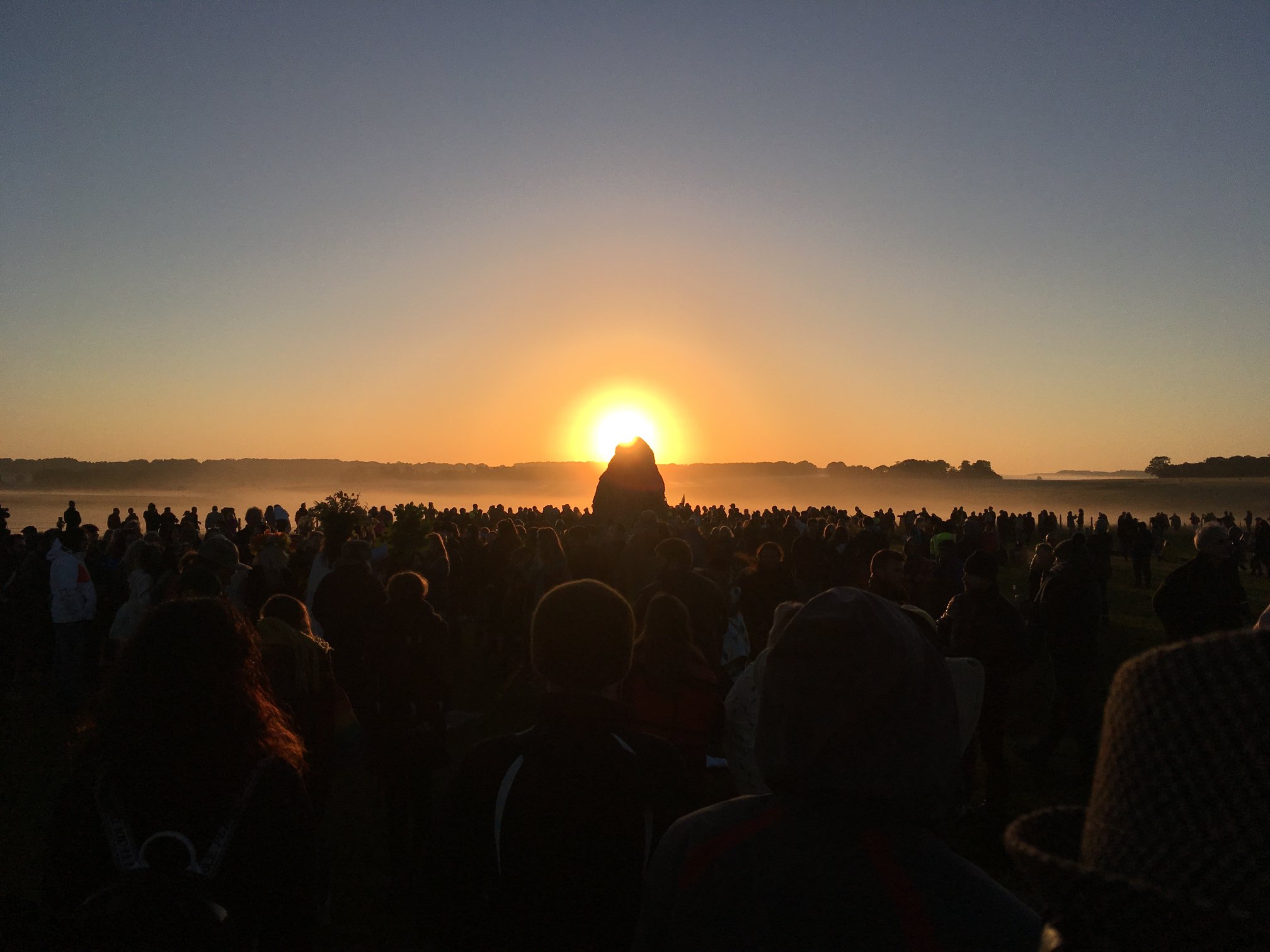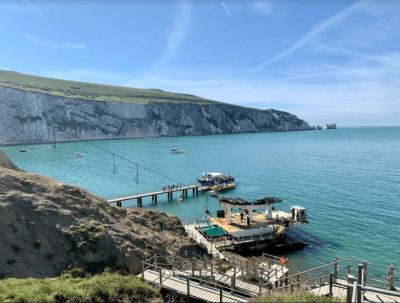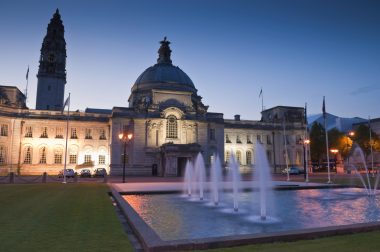Planning your Visit to London
River Thames
The River Thames has been the heart of London life through the centuries with its banks full of stories both Royal and common. On this tour we will explore some of London’s medieval and maritime history starting in Greenwich, the birthplace of Kings and the heart of London’s maritime history. Followed by a boat ride to our next destination, the Tower of London, built by William the Conqueror and used as a dungeon, a fortress and today where the Crown Jewels are stored. Famous for its ravens and Yeoman Warders, or Beefeaters, as they are known.

Greenwich
In Greenwich we will visit the world-famous meridian line and stand at the beginning of time. This is during our visit to the Royal Observatory where you will see how the problem of latitude was tackled back in the 18th Century, solving a great navigational question and propelling Britain’s international trade and exploration.
Then we will walk down through the famous sights of Greenwich such as its imposing old Royal Naval College (now the University of Greenwich), see the Queen’s House, the Maritime Museum, the Cutty Sark, and have lunch either from Cutty Sark or the surrounding restaurants.

After lunch it’s off to the river to sail back into the centre of town, arriving at the iconic Tower Bridge and heading on to our final location, the Tower of London.
One of the themes of the day is the River Thames, linking both our sites. For most of its history there were only three bridges in London, so most Thames crossings were done by ferry; the river was known as the busiest street in London because most of the actual streets were terrible. They were not paved, full of holes, mud, horse manure and toilet slops. So it was much easier to travel on the river.
London Bridge was the first ever bridge built here, the very first incarnation of it was built by the Romans in 59 AD.
The Thames Watermen who manned the ferry boats were a common feature of the river and became part of the river culture. They had races along the river to show off their nautical skills with competitions like the Dogget Badge Race and the Trafalgar Cup, with cheering crowds, which now reside in the National Maritime Museum in Greenwich.
Now there are 33 bridges in London, 3 foot tunnels, 1 cable car and there are still river boat services such as the Woolwich ferry service and Thames clippers.
Greenwich is the site of the old Palace of Placentia, a favourite palace of Henry VIII (along with Hampton Court) and the birthplace of Queen Elizabeth I. This palace was built in 1443 in the reign of Henry VI but did not survive the British Civil War of 1640 – 1652. The bricks from this old palace by the river were then used to build the Royal Observatory.
Tower of London (UNESCO World Heritage Site)
- Yeoman Warder Tours (4) – the Yeoman Warders, these were the personal bodyguards of the king, a tradition starting in Tudor times. The Constable of the Yeoman Warders managed them and every ship that docked had to give a barrel of wine, rum or brandy to the him. (Priorities) Nowadays to become a Yeoman Warder you need to have 22 years of military service and get to live in the Tower. The thing to know today is that every half hour the Yeoman Warder tours leave from the entrance gate and they are free and highly recommended.
- The Ravens (5) – legend has it that seven ravens must always live in the Tower, if they leave both the Tower and the Kingdom will fall! The Ravens actually stay in aviaries here and are fed, looked after and let out in the daytime.
- White Tower (2)– old keep built by William the Conqueror who started building it immediately after he conquered England in 1066. Henry III 1220s painted it white and that’s how it got its name. It has been a Royal Residence, a military barracks and a dungeon. Famous prisoners of the Tower of London are Anne Boleyn (H8 2nd wife), Sir Walter Raleigh the Elizabethan explorer, Catherine Howard (another one of Henry VIIIs unfortunate wives), William Penn who later left England after his incarceration to found Pennsylvania, Rudolf Hess who was captured as a prisoner of war in 1941 and Guy Fawkes, of the famous Gun Power Plot.
- Crown Jewels (1) – this set is from the 1660s and contains items like crowns (of course), swords, orbs, maces, plates, rings, robes, walking sticks, trumpets and many more items … these are the modern crown jewels as the older medieval and Tudor jewels were melted down when the monarchy was briefly abolished after the Civil War in the 17th Century, when King Charles 1 was executed by Oliver Cromwell.
(The coronation practice started when Christianity was adopted and the monarchs had to be ordained under God so a collection of coronation regalia evolved for this purpose.) There are different jewels for different occasions such as state dinners and the opening of Parliament.
- Traitors Gate – This is the infamous entry to the Tower of London for prisoners, it is a water gate and prisoners accused of treason sailed up the Thames and entered through Traitors Gate. Anne Boleyn and Catherine Howard, Henry VIIIs unfortunate wives, were brought to the tower this way before being beheaded.
- In the 1660s it was being used as an arsenal and the White Tower was packed full of gunpower on every floor, very scary in 1666 during the Great Fire of London!
- During the Blitz in World War II there were people stationed on the roof of the White Tower who would pickup unexploded bombs dropped by the Luftwaffe and throw them off to try and minimise the damage. There were also bomb catchers on the ramparts and on other buildings like St Pauls Cathedral each night during the Blitz, picking up bombs and throwing them as far away as they could.
A Journey through Space and Time…
Our first stop will be at Royal Observatory on the hill in Greenwich park, here we will have an hour and a half where you can explore the history of longitude and time. As trade and exploration became more and more important in the 16th Century the issue of longitude, or finding out where you were at sea in in regards to time zones or the longitudinal pole to pole direction, became increasing important.
- Founded by Charles II in 1675 and built by Christopher Wren (famous architect). As international trade grew there was a growing need for reliable navigation and especially the calculation of Longitude. Early work was done by Italian explorer Amerigo Vespucci and Galileo Galilei (who invented the telescope) but the methodology was still crude and there was a need to have a stable clock that didn’t go out of sync on an unstable ship. (Pendulums)
- Many ships, men and cargo had been lost due to captains not being able to navigate clearly so it became a political and economic issue. When the ships hugged the coastline, they could gauge their position fairly accurately but as more and more journeys involved crossing the vast expanse of the Atlantic or the Pacific, with no sight of land, ships and cargo frequently got lost.
- In 1714 the Longitude Act was passed by Queen Anne and the British government, creating a competition to solve this problem. There was over a million pounds in prize money available which was given out in stages to successful applicants to encourage people to work on this issue. Clockmaker John Harrison rose to prominence and became the winner, solving the greatest problem of the day. Harrison was from Lincolnshire and made various versions of his chronometer – his longitudinal clocks, which you can see in the Observatory.
- Here at the observatory you can take your photo on the Prime Meridian, the theoretical beginning of time.
- At an international conference in 1884 a decision was made to use Greenwich as the Prime Meridian line. This was due to all the pioneering work done by John Harrison and because the system he designed work so well that it was quickly adopted and used all over the world. It would have been difficult to suddenly change the whole system so Greenwich observatory was agreed as this fixed point due to it already being widely used. It also meant that the International Date Line, where time goes from 24 hours to zero, falls in the middle of the Pacific Ocean and causes the least disruption.
- The Time Ball – a big red ball that sits on top of the Observatory on top of the hill in Greenwich Park. Constructed in 1833 at this point so all ships could see it from the river and set their clocks/chronometers by it. Ships would be waiting in the river, looking up at the Observatory and waited with watches and chronometers for the Red Ball to drop so they could all set their clocks to the exact time and then set sail, knowing they would be able to calculate longitude. The Red Ball would rise at 12:55, halfway up the mast, then at 12:58 all the way to the top and finally at 13:00 it drops and all watching sailors would set their clocks. And sail off …..
Pass through Blackheath
Blackheath – looks idyllic, people walking dogs, children flying kits, couples walking hand in hand …. Over the corpses. The name is thought to be a corruption of ‘Bleak Heath’ as it was used as a burial pit during the Black Death, the Bubonic Plague of 1340s. (Two plagues 1340s and then 1665 but that was killed by the Great Fire of London a year later). There were a huge amount of bodies and the local church graveyards couldn’t keep up with the burial, so several plague pits appeared around London as bodies had to be disposed of quickly. When building Crossrail, an underground train line stretching across London, worked had to stopped for a year at Liverpool Street as they unearthed a plague pit. Workmen were sent home and scientists stepped in and all the bodies were taken away for study, roughly 100. This was from the 1665 plague not the 1340s plague.
Interesting fact – the word quarantine comes from the Italian word for forty, quaranta. This came about during the plague outbreaks after the Doge of Venice decreed that all ships arriving from the East had to stay in the harbour for 40 days and 40 nights to keep the plague away.
View from Royal Observatory
- Shard – built by Renzo Piano
- Walkie Talkie building – car melting death ray!
- Play sign
- Canary Wharf – now a banking and finance area but once the site of the old docklands. Full of slum housing for the dockworkers and old store houses for all the goods that would come into London from all across the globe. Apparently the smell was both beautiful and awful – spices and tanneries. By the 1980s this area had become very run down and deprived so a mass slum clearance took place with the local people being moved out of the area and the buildings razed. Then the new Docklands was created as part of a regeneration scheme, bringing in financial services and wealth to the area.
- University of Greenwich, site of the old Palace of Placentia, old Royal Naval Hospital. (More about this later.)
- Old Greenwich Power Station – in the past these lined the Thames and generated electricity for the city and the new underground trains, using coal so caused terrible pollution. There were famous ‘pea souppers’ which we think of as the Victorian fog but these were mainly pollution from the power stations and coal fires in peoples homes. In Dec 1952 the Great Smog that descended over London, low pressure caused an anti-cyclone and all the pollution sat at ground level for days. This killed around 12,000 people and caused chaos in the hospitals. After this the Clean Air Act was brought in in 1956 and these big dirty power stations were phased out. For years they were abandoned but now some are being reused; Tate Modern/Bankside Power Station and famous Battersea Power Station is now being renovated into ‘luxury apartments’, shops and restaurants.
- The Dome – built for the millennium as …. Errr …. An exhibition … ? It was billed as a big attraction but really flopped along with lots of stories of corruption, vanishing money and shady deals. Then it lay derelict for years before being taken over by O2 who have now turned it into a music venue and event space. You can also climb over the Dome, with a professional of course.
- That way France!
Now we are going into the Observatory, please assemble back here at the statue at 11:30am.
(Statue is of James Wolfe Victor of Quebec, winner of one of the many wars between Britain and France. This one was fought in Canada which was at that point mainly British but the French still had their foothold in Quebec. That is until James Wolfe laid siege to it in 1759 threatening to starve, burn and slaughter everyone and then destroy crops and cattle. No messing around from Mr Wolfe and Canada became entirely British.)
***GROUP SPENDS 1 ½ HOURS IN ROYAL OBSERVATORY***
Walking Tour
Greenwich Park is the old hunting ground of Palace of Placentia; Chestnut, Oak, Cedar and Sycamore trees populate the park. Once there was the famous Elizabeth Oak (Elizabeth I was born in Greenwich) – QEI’s favourite tree to relax and picnic under. Born 12th Century, fell and died in 1991.
Maritime Museum

Maritime Greenwich is part of the UNESCO world heritage site that includes the Observatory, Queens House, Royal Naval college and Maritime museum. This museum celebrates the UKs maritime history, Greenwich’s connection with all things naval and the story of exploration. From grand ships and battles to how the average sailor lived day to day. It is a history of Britain at sea told by 2 ½ million items.
Opened in 1937 – the museum tells the stories of exploration to all parts of the globe, the hazzards faced on the way, polar explorations, pacific explorations and all things to do with navigating the oceans. The building was initially a school for the children of seafarers.
- Symbols of Neptune the Roman God of the sea are found on many Roman coins in the museum and run through all British symbolism – Britannia the symbol of Britain holds a trident, she is on the 50 pence piece – symbolising the sea is part of the history of the island nation.
- Royal Golden Barge – This was Prince Fredericks barge and was built in 1732 and it was rowed by a team of 21 oars men. It has a mix of British and Eastern decorations with Golden half lion half fish creatures at the front, three on each side because three lions represent England, and Chinese dragon figures on the cabin to represent trade with the east. Prince Frederick rowed in the barge to meet his betrothed, Princess Augsuta. Current Queen also has a golden barge and in 2012 she sailed in this down the Thames with a huge flotilla of boats for the River Pageant.
- Battle of Trafalgar – Turner painting in room next to Golden Barge. Painted by Turner in 1822 to commemorate the battle in 1805 between Lord Nelson and the British Navy against the French and Spanish fleets in the Napoleonic Wars. Napoleon Bonaparte planned to gain control of the English Channel and invade so George III sent Nelson to defend the realm. The actual battle happened off the coast of Spain at Cape Trafalgar and the British Navy was outnumbered by the French and Spanish. However, with Nelson’s clever tactics and crafty tricks led to a fierce battle, as Nelson commanded from his ship, the HMS Victory. The Franco-Spanish fleet lost 22 ships and the British none, however this is the battle where Nelson received a fatal bullet wound and soon after the battle, he died.
The Victory put an end to Napoleons plans to invade Britain and established Britain as a great Naval power. The painting was commissioned by George IV and originally hung at St James Palace. Another famous monument to Nelson is Nelson’s Column in Trafalgar Square.
- Miss Britannia III – speed boat. Power racing boat built in 1932 by Hubert Scott-Paine for competitions like the Schneider Cup and the Harmsworth Trophy. He got Rolls-Royce to make the engines and to sign an exclusive contract.
- The Atlantic Worlds gallery covers all the relationships between all the Atlantic nations, with of course the big story being Europeans crossing the ocean and settling in the Americas. Other interesting things are artefacts from the Akan and Ashante tribes of West Africa, brass carvings used as weights for trade. These tribes sold slaves to Europeans for goods such as guns and whiskey, so the weights are cravings of guns, symbolic of this trade. There is also a painting of a European trade delegation being hosted by tribal leaders. The triangular trade – Bristol/Liverpool/London to West African – West Africa to the Americas – Back to the UK. This featured the notorious middle passage, the terrible route from West Africa to the Americas where enslaved people were kept in the most appalling conditions on the slave ships.
- And finally, Lord Horatio Nelson is commemorated here. He became a ship’s captain at the age of 21 and went on to become one of Britain’s greatest naval heroes. He joined the Navy at the age of 12 and was aggressive, clever and ambitious. He was known for his clever naval tactics and daring in battle, even after loosing an arm at the Battle of the Nile. He died aboard his ship the HMS Victory and seemed to know his time was up and he made a will just before the battle. He was shot in the shoulder and the bullet pierced his back and lung, dying shortly after victory was declared. His uniform with the bullet hole is in the museum and he was transported back to Greenwich in a barrel of brandy. (Apparently sailors drank the brandy after he was taken out of it….) He is buried at St Pauls.
Nelson’s column in Trafalgar Square. (Great believer in the slave trade and loathed William Wilberforce who was an abolitionist. Both very determined, aggressive characters but Wilberforce won that battle and succeeded in getting the Slave Trade abolished in the British Empire in 1807.)
(There is also a commemoration of the Battle of Jutland which was the largest and most devastating battle of WWI. The British and German navies fought for control of North Atlantic when it was all over, 8000 men were dead and no overall winner.)
Queens House
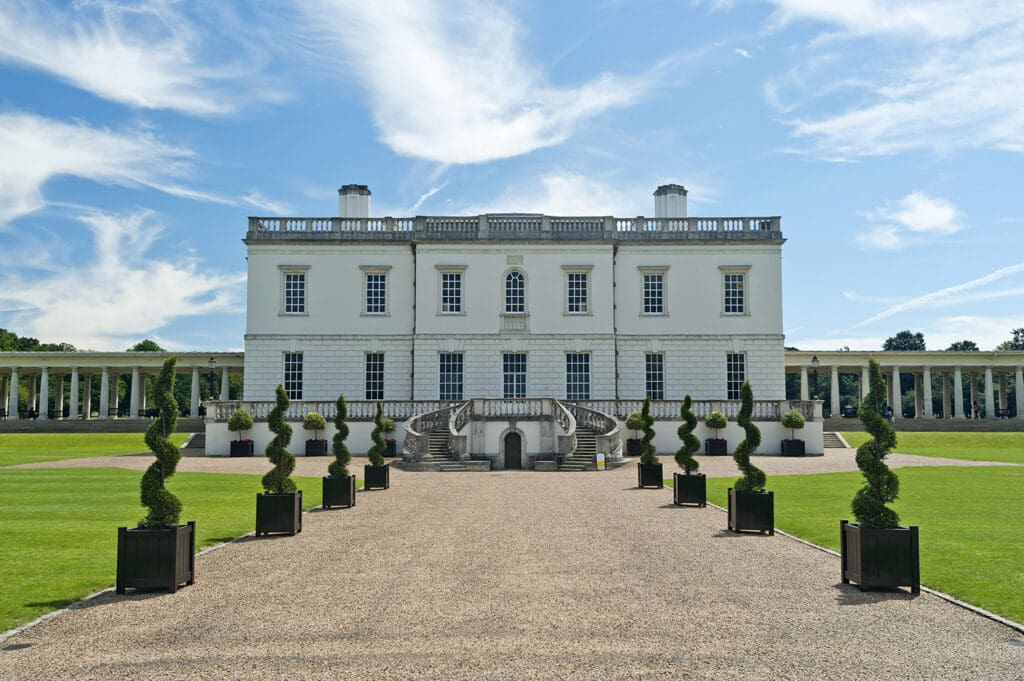
- QH originally built for Anne of Denmark wife of James I/VI as she accidentally shot one of his hunting dogs, they had a big argument and to make up for the fight James gave Anne the gift of Greenwich and she could do whatever she wanted. James I/VI flamboyant like that, as was his grandson C2. He was the son of Mary Queen of Scots who was Elisabeth I s cousin and a catholic. Time of religious wars and so if you were the wrong religion you were also a political enemy, so cousins Mary and Elizabeth were enemies and eventually Elizabeth had Mary beheaded. Then young James was raised by very strict dour protestants to get all the Catholic out of him but this stoic and rather miserable childhood made him a very decadent adult. He was initially king of Scotland but when Elizabeth died without an heir he was her closest relative so inherited the kingdom of England and the vast wealth that went along with that. He did outrageous things like have a whole banquet prepared, have his guests walk by it smelling it and drooling over it. Then he would have it all thrown out as this was supposed to be the temping part of the dinning experience to get everyone hungry and looking forward to their meal. Then another whole banquet would be prepared for the ravenous guests. He also scandalized the court by taking male lovers and was heckled as Queen James when riding about London.
- Anne of Denmark decided to have a house built in the new fashionable Palladian style and the champion of this style of classical architecture was Inigo Jones. Inigo Jones had been on the Grand Tour, one of the first aristocrats to do it (as Britain the heretic nation was still at war with several European countries). His grand tour would have been one of the first and he spent many years in Italy learning art and architecture. It would have looked odd in the middle of medieval Greenwich, a white classical stone box, like today when one of these glass and steel towers goes up in a historical district. Inigo Jones was very confident, pioneering and self-assured but died a broken and penniless man during the civil war. (does anyone know about the British Civil War?) He had been one of the royal family’s inner circle so was hunted by Oliver Cromwell’s men, besieged and eventually freed but they took every last penny he had.
- The house wasn’t finished when Anne died and was left for a while. Then Charles I married Henrietta Maria of the French Royal Family who brought in architect Inigo Jones once again to finish the house. Henrietta Maria was an unsubtle Catholic and the pope was her Godfather, so she was under instructions to reform the heretic nation and bring it back to the Catholic fold however this provoked a lot of anger in parliament. She wasn’t trusted and often invited aristocracy to Catholic sermons and public parades. This was one of things that made Parliament not trust the King and eventually led to the Civil War from 1640 to 1652. (Civil war is one of the most fascinating periods of history as it has fundamentally shaped British History and also world history. It brought to the fore all kinds of radical ideas, at a time of naval exploration and the beginnings of the American colonies. E.g. Levellers – wanted universal suffrage and religious freedom.)
- All the arts of royal palaces were taken during the civil war, the Puritan victors even wanted to sell off Windsor castle, and all the crown jewels including the crown were melted down. The current crown jewels, which you can see this afternoon, are from the restoration period of Charles II, the only remaining original gem is the Black Prince’s Ruby, which was won by Edward III in 1367 by fighting for Don Pedro of Seville. New Crown Jewels were made in 1660.
- The Queens House was the first building of maritime Greenwich that we can see today. The Royal Naval College and the Maritime museum were later additions. Royal Naval College built by Christopher Wren was initially used as a hospital for former Royal Marines injured at war. Then Queens House was then converted into a school for naval orphans and the children of the injured men across the road in the Royal Naval College.
- QH is over 400 years old – anniversary was in 2016 and got tuner prize wining artist Richard Wright to decorate the great hall – previously it had classical paintings but these are now in Marlborough House and the canvases were cut to fit Marlborough House. The inspiration was taken from the Tulip Stairs so the shapes are very organic and look like flying golden leaves.
Interesting features
- Great Hall – original marble floor, first of its kind in UK, Charles I was keen to get all the Italian greats to paint and work in his palaces and used that architectural style. Symmetrical and Would have had the painted ceiling and statues, central one of Charles I himself and then busts of royalty all around.
- Tulip Stairs, a spiral staircase leading off from the Great Hall – Tulip sounds lovely but this is incorrect as they are Lilies, from Fleur de Lys for Henrietta Maria (wife of Charles I) who was French. French royal colours were white and gold, and symbolised by lilies, then the revolution happened, and the Tricolour became the national flag.
- At the top of the Tulip stairs there is a viewing deck so the Queen could watch the ships coming in at high tide. This would have been quite a sight as you could see the Woolwich and Blackwall docks to the east where the water was deeper, and the larger vessels docked. Then all the yachts and smaller vessels would have come further into town. It was a very busy river and every time a large ship went past Greenwich it would fire its cannons in salute, so high tide would have been eventful and noisy. Even as late as the 1970s, the riverbank smelt of spices and rum etc, all the products coming in to the warehouses of Bermondsey and Wapping being off loaded from the ships. Now all the large ships go to Tilbury docks in Essex and unload there. They don’t come into London.
- Upstairs room, old bedroom of Henrietta Maria, has paintings on the ceiling in the Grotesque fashion, which were very fashionable at the time. This was because Italian artists had dug under Rome and excavated the rooms of Emperor Nero and found them full of weird paintings of winged demons, armless women and strange things. Emperor Nero was a bit of a lunatic so all these grotesque paintings should come as no surprise. Grotesque comes from Italian – grotto = cave or underground chamber – what they found when digging into Nero’s rooms. In this room is a famous painting of Elizabeth I who of course never set foot in the house, but the painting is to commemorate her victory over the Spanish armada.
University/Royal Naval College
The Royal Naval College was originally built as a hospital for naval veterans in 1694. It was commissioned by Queen Mary (William and Mary) and built by Sir Christopher Wren and Nicholas Hawksmore. (CW also built St Pauls and many buildings in Oxford.) It was built as a refuge for retired and injured naval veterans as a way of thanking them for their service as before this they had been reduced to begging. As well as being a charitable gesture it was also a statement of pride in the Navy which was hugely important for Britain’s success. And because it’s here at Greenwich, which is where important foreign dignitaries first arrived in London, they wanted the first buildings they saw to be grand. Good PR.
The idea of a charitable retirement hospital had been around for decades and one had already been built for retired or wounded soldiers at Chelsea. The Royal Hospital Chelsea still has it Chelsea pensioners that wear distinctive red coats.
- The hospital in Greenwich housed 2700 naval veterans at its peak.
- Youngest veteran was 12 years old!
- Veterans came from all over UK with some from American colonies, Africa and Europe
- Regimented lifestyle – woken at 7am and had to go to chapel, had uniforms and their old clothes were burned as they were usually full of lice
- Had an allowance but could also work in the kitchens or as a boatswain working on the docks.
- They were forbidden to marry but if they were already married then family could visit
- Despite being called a hospital, medical facilities were very basic and if anything serious happened they would be transferred to central London hospitals or …. Star of Bethlehem Hospital.
- But if you were well, you could leave.
It took 50 years to build and was the pet project of Queen Mary Stuart. It opened in 1705 but was finally completed in 1751. Unfortunately, Mary died of small pox in 1694 so never got to see her hospital completed.
Built on the site of the old Palace of Placentia that had been a grand Tudor residence and the birthplace of Henry VIII, Elizabeth I and Mary I. It was a favourite residence of the Tudors where they could watch the ships come into Woolwich docks across the river. Mock battles took place on the river for celebrations e.g. when Elizabeth I defeated the Spanish Armada. It is also where Anne Boleyn (EI’s Mum) was arrested on the trumped-up charges of treason before being taken to the Tower of London and executed. Henry’s wives …. (Divorced, Beheaded, Dead – Divorced, Beheaded, Wed – Catherine Parr survived!)
Old bricks from this demolished palace were used in the building of the Royal Observatory up on the hill. (If you want to see a Tudor palace in great condition you can join Anderson Tours on our Windsor and Hampton Court tour.) This grand palace had fallen into disrepair during the Civil War, after the execution of King Charles I, and many symbols of Royalty were demolished, and Tudor Palace was irreparably damaged in this period.
In 1873 the hospital was bought by the Royal Naval College that was based in Portsmouth as they were expanding their college and what better place to have a new campus! This college soon became known for its rigorous training and education in all things maritime and scientific and was considered one of the best in Europe. Students from around the world studied here, of course from the British Empire but also from places like China, who were allies in WWII. There was a training ship moored up in front of the college that the young boys aspiring to be sailors trained on. They lived on the ship in order to get them used to life aboard a naval vessel and get them ready for a life at sea.
In 1939 due to the outbreak of war with Nazi Germany women were allowed to join the navy for the first time and were knows as Wrens – Women’s Royal Naval Service. They trained here at Greenwich, not many of them fought, they had roles such as code breakers, radio operators, meteorologists and bomb markers.
Now the University of Greenwich and a Popular film and TV location – The Crown, Thor, Gulliver’s Travels, Four weddings and a funeral, Les Misérables.
(3.5 Painted Hall
Part of the Royal Naval College and meant as a grand dining hall for naval pensioners. It was also where Lord Nelson had his lying-in state so people could come to weep over his corpse.
A dramatic Baroque space that took 19 years to paint by an artist called Sir James Thornhill. The style of the paintings is very triumphant, as this was the time that Britain was becoming a dominant naval and world power, so all the imagery is grand and flamboyant. Which is also the theme of the Baroque style in general plus the regal grandiose posturing.
There are references to Greek Mythology and Roman Emperors sitting alongside various Stuart and Hanoverian Kings and Queens. Paintings such as ‘Triumph of Peace and Liberty over Tyranny’. With King William and Queen Mary surrounded by various mythological figures and angels adoring them. The king is shown with his foot on a figure representing ‘arbitrary power and tyranny’ – which looks like Louis XIV of France. So the usual rivalry between the French and British.
Another painting on the ceiling shows Queen Anne the last of the Stuart dynasty, next to personifications of the continents Europe, Asia, America and Africa and the coats of arms of England, Scotland, France and Ireland. Behold my Empire!
Then the paintings go on to celebrate the Hanoverian dynasty, so Kings George 1,2, 3 & 4 and finally Queen Victoria. There is the motto – ‘A new race of men from Heaven’ about the new Kings and the picture shows the King holding a globe – it is all mine. So all very grand, triumphal and to celebrate the trading Empire that was being built.)
Greenwich Market
There has been a market here since the 14th Century and the current market was given it’s charter by Lord Romney in 1700. It has a variety of food, arts and crafts.
5 Pie and Mash at Goddard’s
Traditional, working-class, English food (Scots, Welsh and Irish are similar in that they involve lots of potatoes). Which became a dietary staple in the Victorian age with Pie and Mash shops popping up all over town.
The main meal is pie, mash and liquor – which is not alcoholic as the name would suggest. It is actually parsley sauce. Traditionally you ate your pie and mash with jellied eels fished from the Thames, which wasn’t the cleanest river during Victorian times. Eels were a plentiful food and a rich source of protein but in 1957 the river Thames was declared biologically dead. WWII bombing had destroyed some of the Victorian sewage system, leaking raw sewage into the river and it was called the ‘foul smelling drain’ by the locals. There was a huge amount of infrastructure damage to repair after the War so it wasn’t until the 60s that the Thames started coming back to life as sewers were repaired and now the river is much cleaner, the eels have repopulated it along with fish, seals and bird life.
We are going to have this traditional English dish here at Goddards that has been here at Greenwich since 1890 and is still run by members of the Goddard family. Everything is homemade and they have expanded their menu to include vegetarian, chicken and steak these days – not just minced meat. But even in Victorian times there were some exotic additions you could add due to all the nearby docks bringing in spices and goods from all over the world.
They also have traditional deserts that you may want to try such as sticky toffee pudding and custard.
After lunch, we will take a boat from Greenwich Pier to St Katherine’s Pier for our visit to the Tower of London. Please be on time for this as the boat won’t wait, it will sail without us.
Cutty Sark
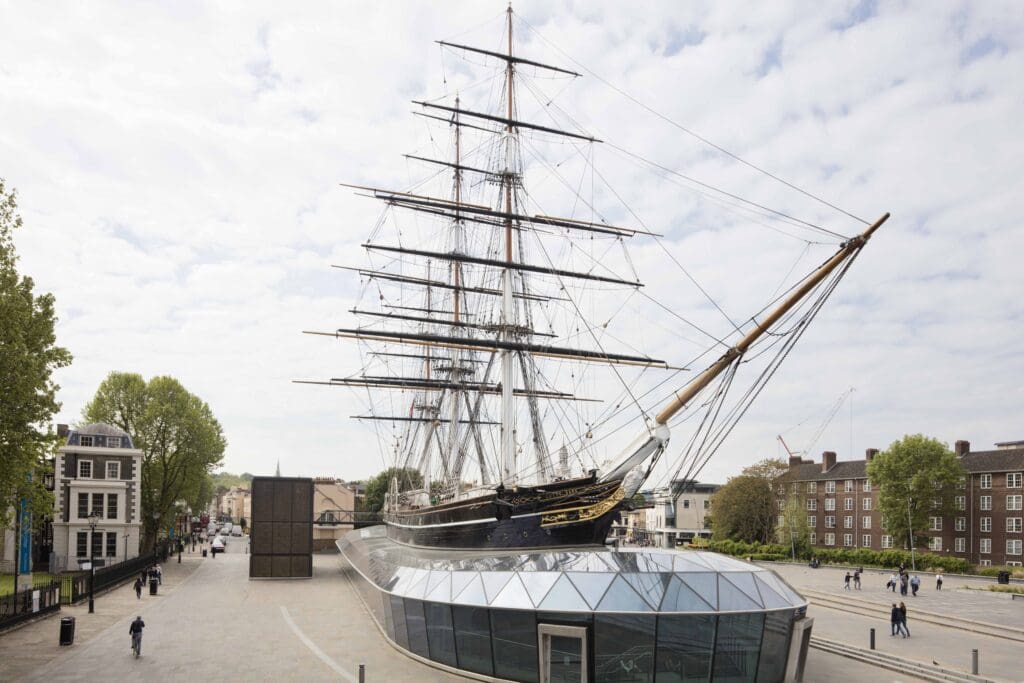
This is an old Tea Clipper, designed to the be the fastest ship to sail between London and Shanghai, but didn’t’ quite manged to claim this title. It sailed from London with goods such as wine, spirits and beers and returned packed full of tea. It’s first voyage was in 1870 and sailed around the treacherous Cape of Good Hope.
There were tea races between tea clipper ships as fresh tea or the first crop of the year was a highly sought after good and ships would race across the globe to fulfil this very profitable demand.
The tea trade was highly lucrative, and tea was a luxury good across Europe. Initially the British East India Company had control over this and imported opium from Bengal to ports in China, buying tea and returning to Europe with it. This then resulted in massive addiction problems in China and China began seizing and destroying the opium and banning international trade. This then resulted in the opium wars between Britain and China which were won by Britain and resulted in China giving Hong Kong on lease to the British Empire.
In 1834 parliament took away the East India Company’s exclusivity on the tea trade and opened up the market, thus making it an everyday good for all parts of society.
Our tea clipper here only completed 8 journeys there and back before being retired. It was launched the same week the Suez Canal opened and cut 3000 miles off the journey. This meant that steam ships moved in on the trade. It was quite late in the century to be using sailing ships because steam power was taking over and the business was soon moved to the faster steam ships. It was then sold to the Portuguese then sold back to the Thames Nautical Training College to train young sailors for the merchant navy and now rests here, an old retired lady.
The strange sounding name is Scots as the ship was built in Dumbarton, on the River Clyde, in Scotland. It means wee nighty. The word sark is a nightgown in Scots and cutty means cut short and it describes the figurehead, a lady in a wee undergarment, the bare breasted Nannie Dee!
Tower of London



